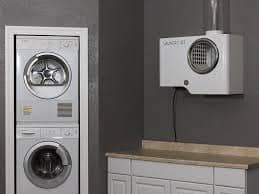Introduction:
Ensuring the well-being and comfort of residents in nursing homes is of paramount importance, and one often overlooked aspect is the proper labeling of their clothing. Labeling clothes not only helps in maintaining organization within the facility but also ensures that residents receive their own garments, promoting a sense of familiarity and personalization. In this article, we will explore various effective strategies for labeling clothes in nursing homes, offering practical solutions to streamline the process and enhance the overall experience for both residents and staff.
Permanent Markers and Tags:
One of the simplest and most cost-effective methods for labeling clothes is using permanent markers and tags. Clothing tags can be sewn or attached to garments, providing a clear space for the resident’s name. Permanent markers come in various colors, making it easy to differentiate between residents and their respective belongings. This method is durable and long-lasting, surviving multiple washes and wear.
Iron-On Labels:
For a more professional and aesthetically pleasing option, consider using iron-on labels. These labels can be customize with the resident’s name and are applie directly to the fabric using a hot iron. Iron-on labels are durable and remain legible even after repeated laundering. This method is particularly useful for delicate fabrics that may be damage by traditional sewing.
Color-Coding:
Simplify the identification process by implementing a color-coding system. Assign a specific color to each resident, and label their clothes, linens, and personal items accordingly. This method is especially helpful for residents with visual impairments or cognitive challenges, as they can easily recognize their designated color.
Barcode and RFID Technology:
Embrace technology by incorporating barcodes or RFID tags into the clothing labeling process. Each resident can be assigne a unique code that corresponds to their personal information. Staff members can use handheld scanners or RFID readers to quickly identify and match clothes with the correct resident. This automated system reduces the risk of human error and enhances efficiency.
Embroidered Labels:
For a durable and sophisticated option, consider using embroidered labels. These labels can be sewn onto clothing items and offer a permanent and visually appealing solution. Embroidered labels are resistant to wear and tear, ensuring that the resident’s name remains visible throughout the lifespan of the garment.
Personalized Name Stamps:
An innovative and time-saving approach is the use of personalized name stamps. These stamps, equipped with indelible ink, can be imprinted directly onto fabric or clothing tags. Personalized name stamps are quick to use and provide a clear and consistent labeling solution.
Educating Staff and Residents:
Regardless of the chosen labeling method, it is crucial to educate both staff and residents on the importance of maintaining labeled clothing. Implement training programs to ensure that all staff members understand the labeling system in place and encourage residents to be proactive in identifying their belongings.
Conclusion:
Properly labeling clothes in nursing homes is a fundamental aspect of providing personalized care to residents. Whether using traditional methods like permanent markers or embracing innovative technologies such as RFID, the goal is to create an organized and efficient system that contributes to the overall well-being and comfort of those residing in the facility. By implementing these effective strategies, nursing homes can enhance the daily lives of residents and streamline the clothing management process for staff, ultimately fostering a more positive and supportive living environment.





